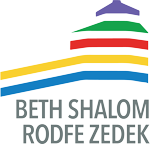Holy Scrollers Preview
Aharei Mot
Leviticus 16-18
Rabbi Rachel Goldenberg
This week’s Torah portion takes us back to the last piece of narrative we had in the Book of Leviticus, when, on the day of initiating the sacrificial system, Aaron’s sons Nadav and Avihu are consumed by God’s fire for bringing a sacrifice that hadn’t been requested. The name of the Parashah “Acharei Mot,” means “after the deaths of. . .” referring to Nadav and Avihu.
This event provides the context for what follows -- instructions for the purification and expiation of the Mishkan and of the People on Yom Kippur; laws regarding proper slaughter and consumption of meat; and laws prohibiting certain sexual relations, including incest.
I’d like to spend most of our time with the first section and explore what we think the difference might be between cleansing and purging the Mishkan of “tum’ah,” or impurity and the ridding of the Israelite people of “avon,” “pesha” and “chet,” which are all variations on the idea of sin. Ritual impurity is cleansed with the blood of sacrificial animals. There is cleansing on behalf of Aaron and his household as well as on behalf of the people. But then there is this additional ritual of the goat of Azazel, where one goat is sacrificed, and the other, after the sins of the people have been confessed over it, is let loose in the wilderness. Why do we need both of these rituals?
We’ll also study the sections of the Mishnah (Oral Law) which expound on the ritual of Yom Kippur, especially the goat of Azazel.
It’s interesting to be focusing on Yom Kippur in the middle of April as we prepare for Passover (This parasha is almost exactly 6 months before and 6 months after Yom Kippur.) Perhaps we’ll gain some insight into this juxtaposition as well.
Shabbat Shalom!

No comments:
Post a Comment